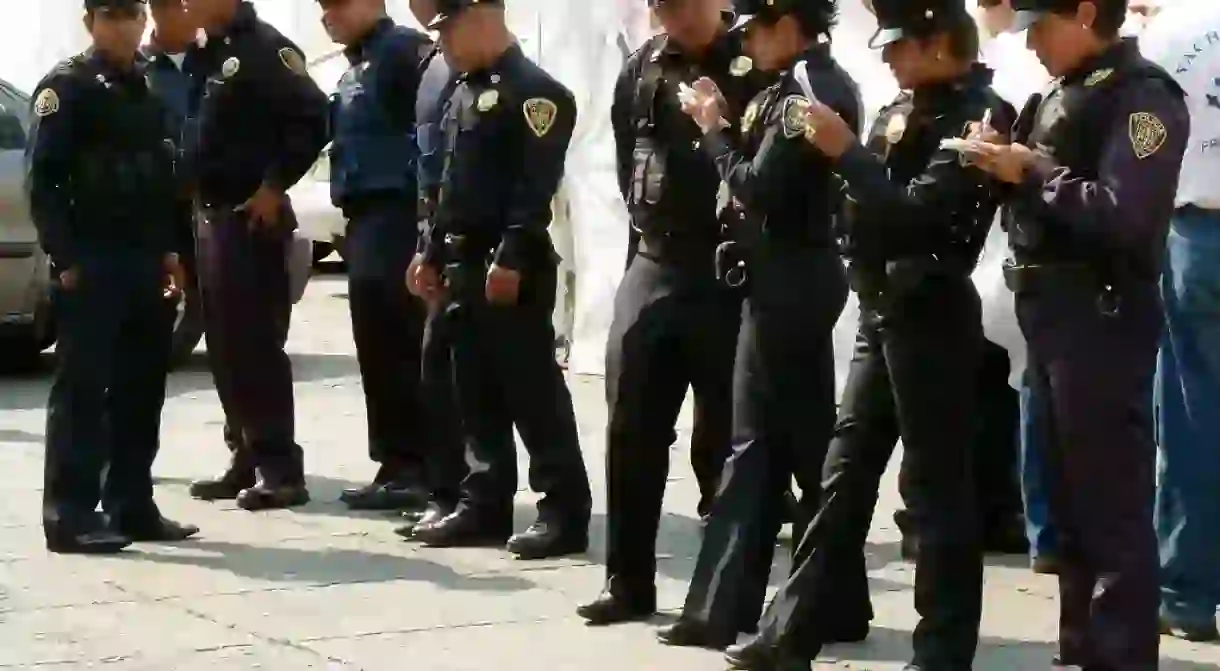8 Reasons Why Mexico City Isn’t as Dangerous as You Think

Despite being one of the world’s top tourist destinations, as well as one of the best capitals in the Americas for food, culture and history fans alike, Mexico City does not have the best reputation when it comes to safety. While there is danger lurking in Mexico City, just like there is anywhere you go, here are the eight reasons why it isn’t actually as dangerous as you think.
Taxi safety is far improved
In recent years, reports of Mexico City taxi drivers kidnapping and attacking passengers have made news all around the world and scared many potential tourists and visitors to the city into staying at home. However, these events, while not entirely non-existent, are now far more firmly in the past than the present. In fact, Mexico City recently rolled out a fleet of taxis that have taken tips from the Uber playbook to make their private transport options safer for everyone. Plus, you can always just use actual Ubers.

There is plenty of protection in place
Mexico City is full of security cameras, which are huge deterrents against crime, whether that be kidnapping, pickpocketing or mugging. In fact, recent reports indicate there are around 11,000 CCTV cameras monitoring the goings on in and around the capital on a daily basis. What’s more, the city has the largest ratio of police officers to citizens in the world at 1:100. Hopefully the sheer level of security measures in place should therefore help put your mind at ease.

Most dangerous areas are not the tourist hubs
While this perhaps doesn’t apply to those hoping to live in Mexico City on a long-term basis, it certainly helps disprove the “Mexico City is unsafe for travelers” myth. Much of the crime, with the exception being pickpocketing, actually happen in neighborhoods around Mexico City that are unlikely to be traversed by tourists. In the key, central zones such as the Historic Center, Roma and Coyoacán, the chances of you falling foul to anything other than over inflated market prices are incredibly low.

Kidnappings are more likely to happen to residents
Again, this is the difference between visiting and living in Mexico City. Kidnapping is easily one of the biggest issues many would-be travellers are concerned about before coming to the Mexican capital. However, while kidnapping is absolutely still a problem, the chances of it happening to a tourist are low. Most kidnappings nowadays tend to be targeted at residents, because (so the current theory goes) they are less likely to cause a fuss and have friends and family who’ll alert authorities.

Common sense can help avoid most pickpocketing incidents
Heavily tourist-frequented zones, as well as busy buses and metros are places to be careful in. However, while pickpocketing still remains a serious issue, it’s one that can easily be avoided by using common sense; keep your phones and wallets in zipped pockets, inner pockets or inside zipped bags, rather than in your easily accessible back jeans pocket. Most people who get pickpocketed admit that they weren’t taking the proper precautions to protect themselves against such an event, so if you do you should be fine.

Murder rates in Mexico City are overblown when it comes to tourists
Yes, people are murdered in Mexico City, as with any other city in the world. However, the figures are overblown when it comes to the tourists involved in these incidents. Take, for example, statistics for US nationals in the year 2013; 81 of six million visitors were killed, and only two of them in Mexico City.

Organized crime is just that, organized
One of the rifest problems in Mexico as a whole is that of organized crime. However, organized crime does, if you forgive the crudeness, just what it says on the tin – it’s organized. Targets for incidents of organized crime are not random. In fact, the only danger posed by this subsection of “dangerous Mexico” is if you’re caught in the crossfire between officials and criminals, or between cartels and gangs. The likelihood of that happening in Mexico City, one of the biggest tourist hubs in the country, is very low.

Street food is not actually that likely to make you sick
Finally, while the rest of this article has focused on crime, it’s worth addressing the fact that many would-be visitors consider eating the street food to be dangerous. In actuality, the vast majority of street food stalls will not make you unwell – as long as you exercise common sense. For example, make sure they have running or clean water, that the meat isn’t sitting out uncovered, and, most importantly, that there look to be locals eating there. If you avoid street food because you think it’s dangerous, you’re missing out on perhaps the biggest reason to visit Mexico City.














